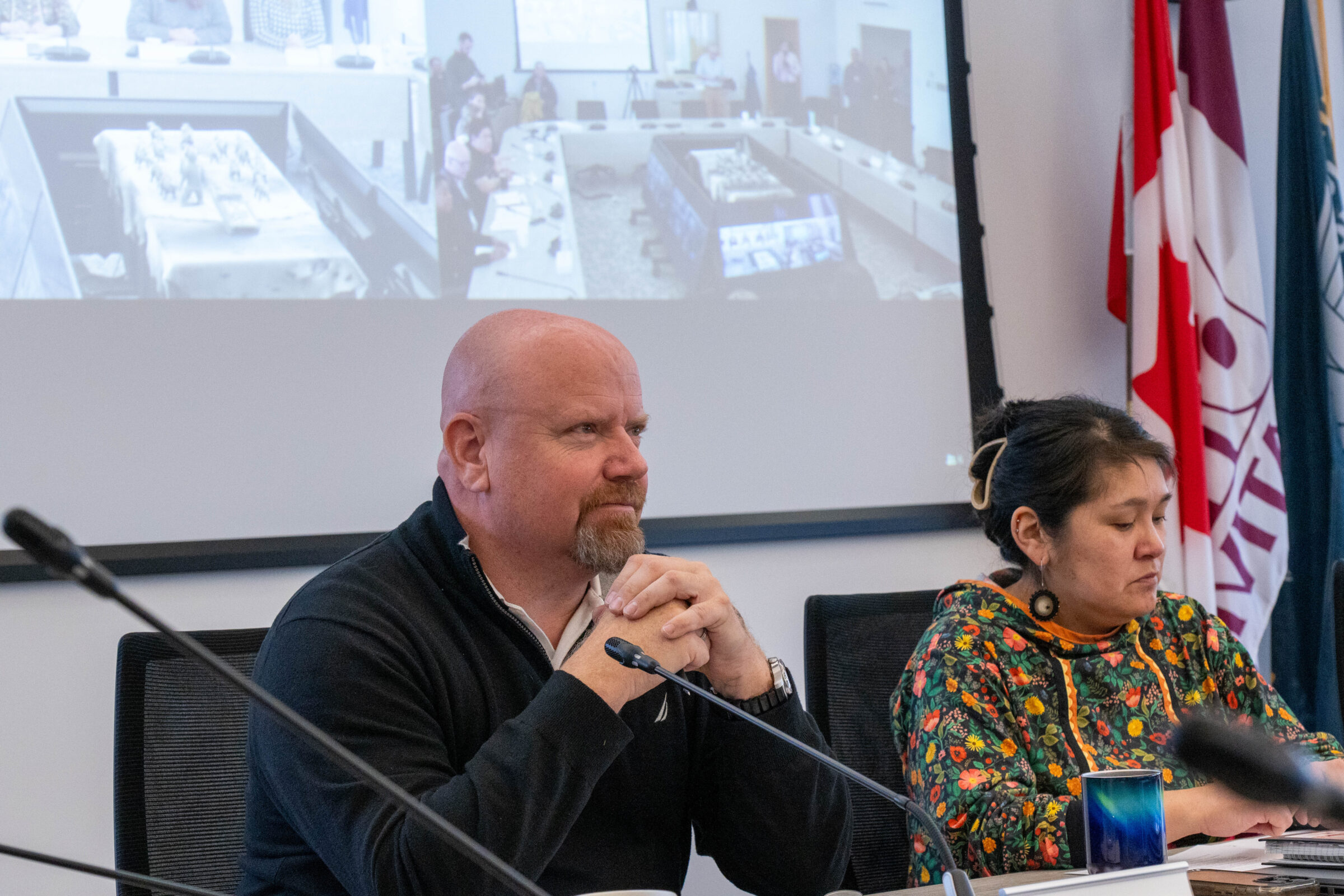Quebec launches review of Puvirnituq water crisis
Pipeline break left village without treated water for weeks
Ian Lafrenière, Quebec’s minister responsible for Indigenous relations, says the government is launching an independent review of the circumstances that led to the crisis. He wouldn’t commit to the government picking up the entire estimated multi-million-dollar repair bill. In this file photo he is shown seated next to Hilda Snowball, chairperson of Kativik Regional Government. (File photo by Cedric Gallant)
The Quebec government is launching an independent review of the Puvirnituq water crisis to determine the causes and a path forward, says Ian Lafrenière, the minister responsible for relations with First Nations and the Inuit.
“We’re not looking for a Band-Aid solution. I want to see how we can do better, what could be done, what’s feasible. This is a priority for us,” Lafrenière said Tuesday in an interview with Nunatsiaq News.
He visited Puvirnituq for a few hours on June 20 for the first time since the state of emergency was declared in Nunavik’s second-largest community of roughly 2,100. The state of emergency lasted 20 days, ending June 6.
The water crisis was spurred by a break in the main pipeline that brings water from the river to the treatment plant in the village. The struggles started March 18 with a boil water advisory issued by the village.
Untreated water had to be trucked into the village. But that effort was hampered by weather conditions and some of the trucks being out of service requiring repair. Health centre patients and long-term care residents were sent south during that time.
On May 17, after a fire in the community, local leadership declared a 10-day state of emergency. It was extended May 27 for another 10 days until June 6.
In that time, the Quebec government airlifted 145,000 litres of bottled water to Puvirnituq and Canadian Rangers were deployed to help during the crisis. A temporary 2.9-kilometre pipeline was installed in late May to connect the pump at the river to the water filtration plant.
Lafrenière said he doesn’t know how long the temporary pipe will be able to sustain the community — that’s one of the issues the government is continuing to monitor.
Because of supply issues for repair parts, a permanent fix to the five-kilometre Puvirnituq pipe might take a year and cost between $5 million and $10 million instead of an initial estimate of $300,000, said Hossein Shafeghati, Kativik Regional Government’s public works director.
Lafrenière didn’t say whether the government of Quebec will commit to picking up the cost to replace the pipeline.
“Before committing, we are waiting for the budget and we’ll see how we can help,” he said, adding the crisis is something the Quebec government and Kativik Regional Government will “deal with together.”
Through a review of the emergency that will be conducted by an independent company, the Quebec government hopes to determine the origins of the emergency and possible solutions.
As well, the goal is to establish how the government can learn from the crisis and be better prepared to respond in the future, Lafrenière said.
“It’s going to be a learning event for us. We hope it’s not going to happen [again], but if it does we will be ready,” Lafrenière said.
Findings from the review are expected to be released in the fall.






(0) Comments